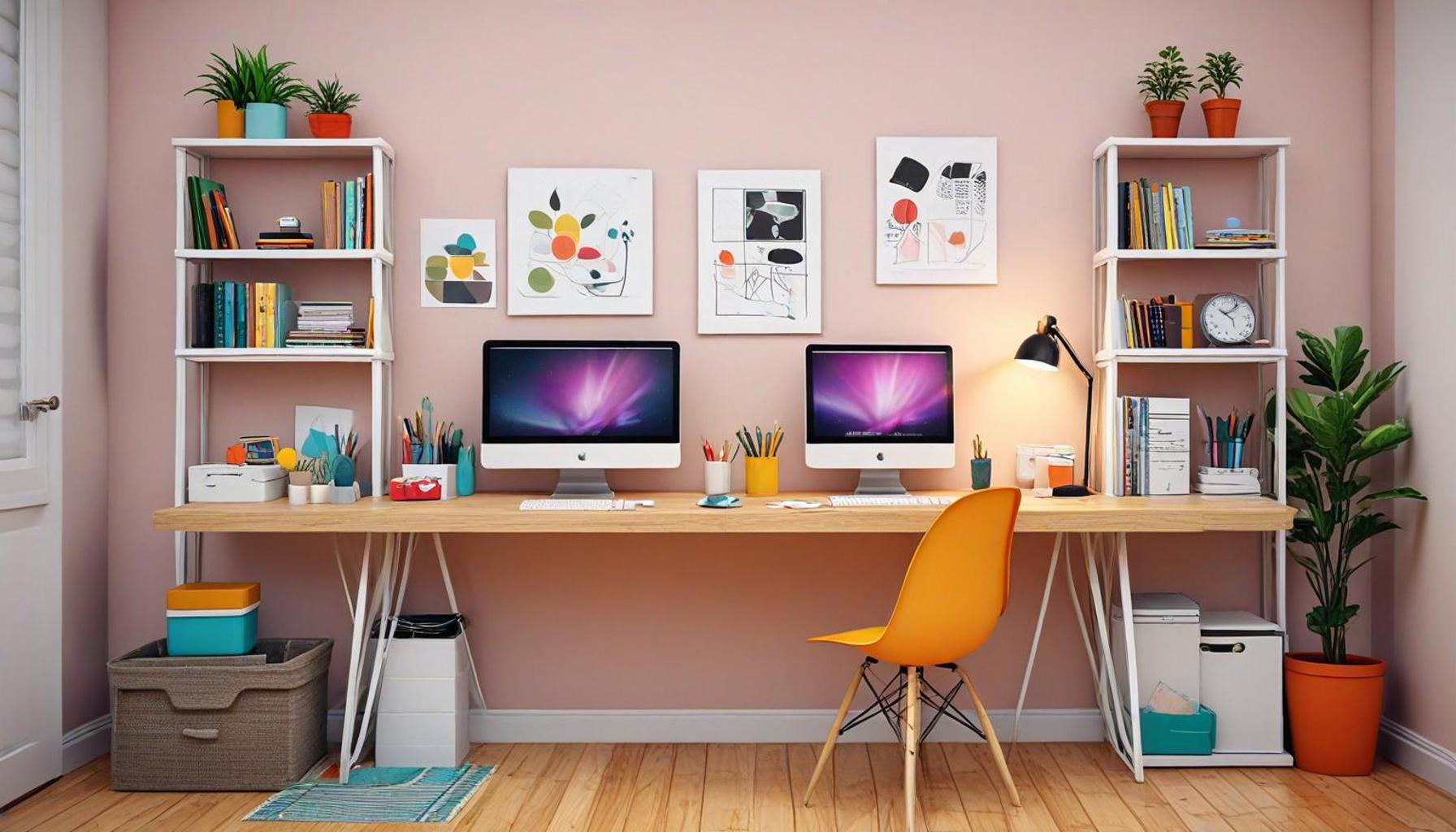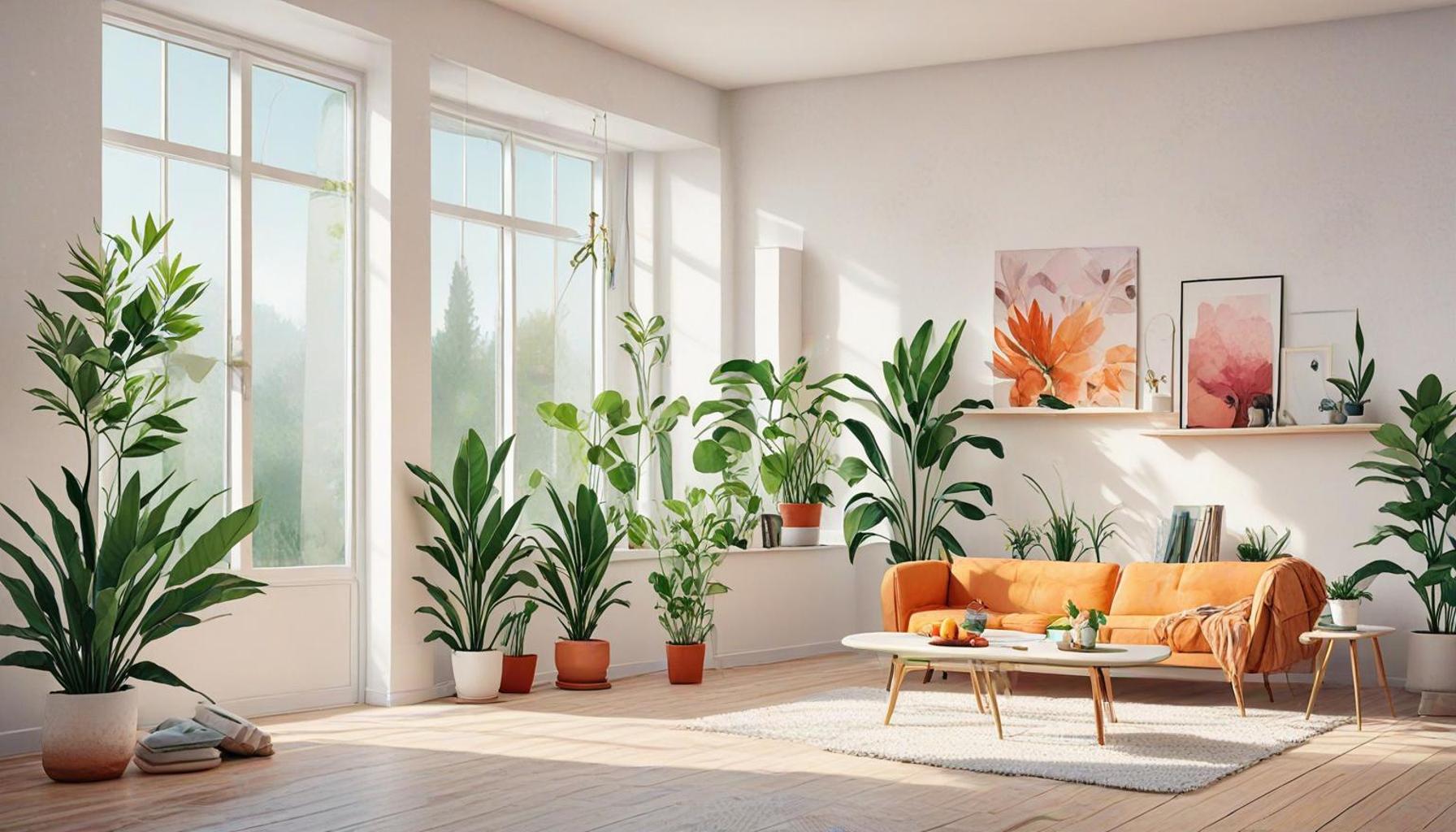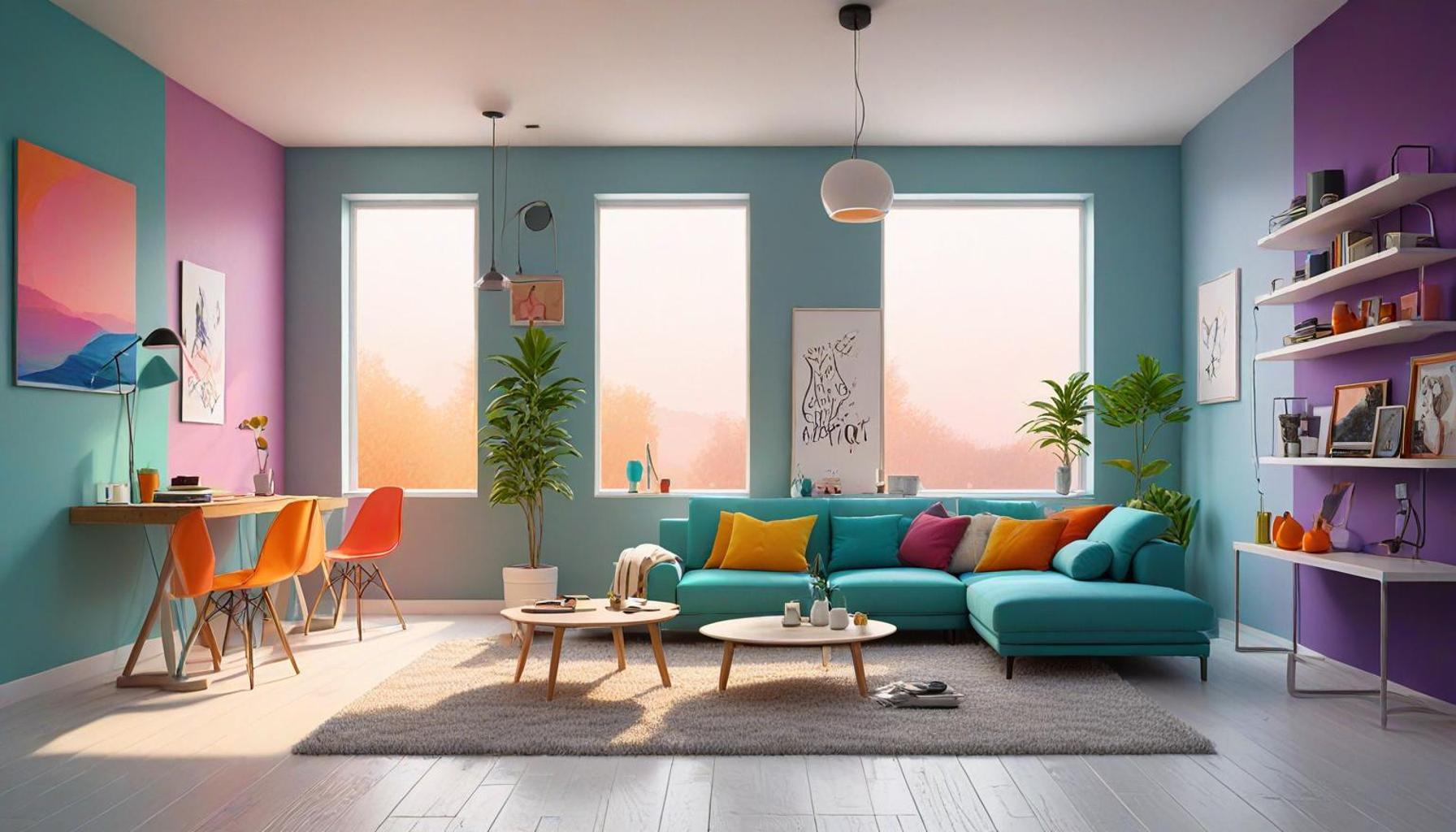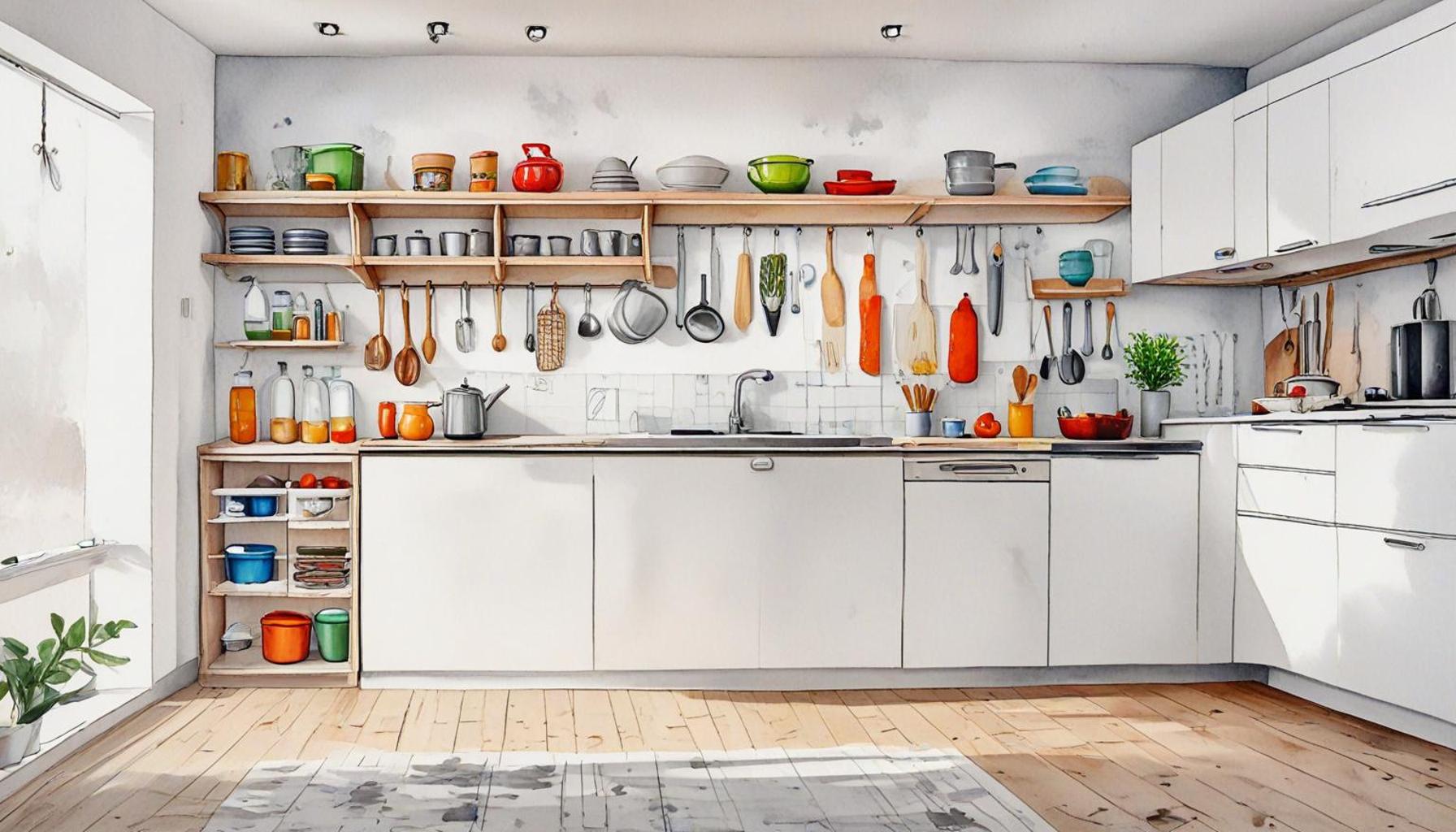Minimalist Organization Strategies to Maximize Space in Home Offices

Unlocking Space with Minimalist Organization
In today’s fast-paced world, creating an efficient workspace at home is essential. A well-organized home office not only enhances productivity but also cultivates a peaceful atmosphere. To achieve this, implementing minimalist organization strategies can be transformative.
Consider these practical benefits that come with minimalism:
- Increased Focus: Research has shown that a clutter-free environment helps individuals concentrate better on their tasks. When your surroundings are tidy, your mind can easily shift its focus to the work at hand, thus reducing mental fatigue and the tendency to procrastinate.
- Enhanced Aesthetics: Minimalist designs create a visually appealing space that reflects clarity and intentionality. An organized office can inspire creativity and innovation, as bright, open spaces often boost mood and motivation.
- Better Space Management: Efficient use of space helps you avoid overcrowding, crucial in homes where every square foot counts. It allows you to make the most out of small areas—think urban apartments or shared rooms—ensuring that you have a conducive work environment no matter the size.
By adopting minimalist principles, homeowners can drastically improve their office setups. Popular strategies include:
- Decluttering: Regularly removing items that aren’t necessary is pivotal. Try a ‘one-in, one-out’ policy: for every new item you bring into the office, consider removing one that you no longer use. It’s a gradual process, but you’ll be amazed at how much clearer your workspace can feel.
- Utilizing Vertical Space: Shelving and wall-mounted organizers free up valuable desk space, allowing for better organization of documents and supplies. Vertical storage not only makes items more accessible but also adds a touch of style to your office. Consider using floating shelves to display books and awards, blending functionality with decor.
- Multipurpose Furniture: Opt for desks that include storage options or fold away when not in use, like convertible desks or compact writing tables. This flexibility allows you to adapt your workspace according to your needs, whether you’re preparing for a big project or simply want to keep things tidy.
Each of these strategies contributes to a more functional workspace, making it easier to stay organized and efficient. As more Americans embrace remote work, these minimalist approaches can be your key to maximizing space in a home office. The transition to minimalism not only enhances productivity but also brings tranquility to your daily work routine, making it a worthy consideration for anyone seeking balance in their professional and personal lives.
DIVE DEEPER: Click here to uncover the power of decluttering
Streamlining your Workspace: Key Minimalist Strategies
Adopting a minimalist approach in your home office can significantly impact not only the aesthetics of your space but also your productivity levels. The beauty of minimalism lies in its ability to strip away the unnecessary, making room for what truly matters. Here are some fundamental strategies that can help you streamline your workspace and maximize space:
1. Embrace a Digital-First Approach
In an increasingly digital world, going paperless can drastically reduce clutter. Implementing a digital-first approach means transitioning your files, notes, and documents to digital formats. Use cloud storage solutions, such as Google Drive or Dropbox, to keep all your important documents organized and accessible from any device.
Not only does this help in decluttering your physical space, but it also promotes efficient searching and retrieving of important information. Additionally, utilizing note-taking applications like Evernote or Notion can help keep your thoughts organized without the need for physical notebooks.
2. Create Defined Zones
Designing your home office with specific zones can elevate its functionality. Think of your office as a multifunctional space where every area serves a unique purpose. For instance, designate areas for tasks like brainstorming, research, and administrative work. Each zone should include only the necessary tools and materials relevant to that activity.
Using dividers or even different rugs can visually separate these spaces, making it easier to shift your mindset depending on your current task. Clearly defined zones prevent distractions and help maintain a sense of order in your work environment.
3. Adopt Modular and Flexible Furniture
When it comes to home office furnishings, consider modular furniture that can be rearranged based on your needs. Desks that can be expanded or compacted, shelving that can be moved around, or even multifunctional chairs can offer versatility that adapts to your workflow.
Using pieces that can serve multiple purposes—like a bookshelf that doubles as a room divider or a desk that has built-in storage—freed up valuable floor space while maintaining a minimalist look. This flexibility is especially beneficial in smaller rooms where maximizing every inch is crucial.
4. Mindful Accessory Selection
When considering decorative elements, be selective and purposeful. Choose accessories that resonate with your personality but adhere to a minimalist ethos. Prioritize quality over quantity—opting for a few beautiful items over numerous knick-knacks can keep your space visually appealing without creating chaos.
Incorporate plants, artwork, or personal photographs that inspire you; just ensure they don’t clutter surfaces unnecessarily. A thoughtfully curated selection of accessories can enhance your office’s ambiance while contributing to your overall efficiency.
By implementing these minimalist organization strategies, you’ll find that not only does your home office become a more pleasant and efficient environment, but it can also foster creativity and a sense of calm. As you continue to refine your workspace, you may discover that minimalism is less about having less and more about making space for what matters most in your professional life.
| Category | Details |
|---|---|
| Decluttering Techniques | Fosters a streamlined workspace, enhancing focus and productivity. |
| Space-Saving Furniture | Multi-functional pieces like foldable desks and organizers conserve space effectively. |
| Vertical Storage Solutions | Utilizes wall space to keep essentials within reach without cluttering surfaces. |
| Digital Organization | Streamlines workflow and minimizes physical documents, saving both space and time. |
Maximizing space in home offices is essential for enhancing productivity and creating a peaceful working environment. The key to minimalist organization lies in understanding the significance of each item in your workspace. Start implementing decluttering techniques that encourage a systematic reduction of unnecessary items, which not only frees up valuable space but also promotes focus. Investing in space-saving furniture can tremendously transform your home office setup. Opt for desks that can be folded away when not in use and organizers that serve multiple purposes to maintain an orderly appearance. Aspects like vertical storage solutions should also be prioritized; shelves and wall-mounted organizers help to keep your essentials within arm’s reach yet off your desk, ensuring a tidy workspace. Additionally, embracing digital organization methods is a modern approach that minimizes physical clutter while enhancing productivity. By implementing these strategies, you’ll find that not only do you create a more efficient workspace, but you also cultivate a serene atmosphere conducive to creativity and focus. Each of these techniques is interlinked and presents opportunities for further exploration into achieving a balanced and organized home office.
DIVE DEEPER: Click here to discover effective space-saving strategies
Maximizing Functionality with Strategic Minimalism
As minimalism continues to shape the way we organize our lives, its implementation in home offices has gained traction among professionals seeking both tranquility and productivity. Beyond basic decluttering, there are additional strategies that can revolutionize your workspace. Here are further minimalist organization tactics to maximize space effectively:
5. Utilize Vertical Space
One of the most effective ways to maximize limited space is to look up—vertical storage is a game-changer in home office organization. Wall-mounted shelves, pegboards, and over-the-door organizers can transform empty walls into functional storage areas. By keeping items off desks and floors, you create an illusion of spaciousness that fosters a more open environment.
Consider floating shelves that can hold books, decor, or essential office supplies. Pegboards are not only versatile but can be customized to hold tools or decorative items, merging functionality with style. In a nation with space constraints like the United States, utilizing vertical square footage can significantly improve the usability of any home office.
6. Implement Smart Cable Management
Cables and cords can quickly lead to chaos, creating a cluttered look that detracts from a minimalist aesthetic. Effective cable management systems help you maintain a clean and organized workspace. Invest in cable organizers, clips, and even cable sleeves to keep your wires tidy and hidden from view.
Opting for wireless devices, where feasible, can further reduce cord clutter. For instance, consider wireless mice and keyboards, which not only enhance mobility but also add to a clean visual appeal. This streamlined approach to technology reduces distractions and contributes to a minimalist philosophy.
7. Prioritize Multi-Functional Items
In a minimalist home office, choosing multi-functional items can help keep things organized without compromising style. Consider desks that can serve as meeting tables, or chairs that offer built-in storage solutions. A foldable desk can provide the versatility to expand your workspace as needed while tucking away during non-working hours.
Additionally, look for organizers that can house a variety of supplies. Drawers with dividers designed for pens, paper clips, and sticky notes can eliminate the use of separate containers that take up precious space. By investing in pieces that serve more than one purpose, you enhance functionality and simplify your office’s overall appearance.
8. Adopt a Minimalist Mindset
Beyond specific strategies, embracing a minimalist mindset is crucial for sustaining an organized environment. This involves regularly assessing your belongings and considering whether each item adds value to your workspace. Make it a habit to evaluate your office periodically and remove items that are no longer needed or useful.
Applying the “one in, one out” rule can help maintain order—each time you introduce a new item, commit to removing an older one. This approach cultivates a disciplined habit of mindfulness towards your possessions, ensuring your workspace remains uncluttered and reflects a commitment to minimalism.
By leveraging these additional strategies, your home office can evolve into a space that not only maximizes physical area but also cultivates an atmosphere conducive to creativity and productivity. Keeping the principles of minimalism at the forefront—simple, functional, and beautiful—will lead to an enduring and effective workspace.
DIVE DEEPER: Click here to elevate your productivity
Transforming Your Workspace with Minimalism
Creating a productive home office environment often begins with the principles of minimalism. This approach is not solely about having fewer items; it emphasizes a thoughtful selection of belongings that cultivate a serene and efficient workspace. By adopting minimalist organization strategies, you can greatly enhance both your productivity and creativity, setting the stage for impactful work.
One effective method to achieve this is through vertical storage. Utilizing wall-mounted shelves or pegboards can dramatically increase your space efficiency, allowing you to keep frequently used items within arm’s reach while freeing up valuable desk space. For instance, instead of cumbersome filing cabinets, try slim, vertical file organizers that keep your important papers sorted without overwhelming your workspace.
Moreover, efficient cable management plays a vital role in maintaining a tidy workspace. Tangled cords can create visual clutter and distract from the task at hand. Consider using cable clips, sleeves, or even decorative boxes to keep these wires organized and out of sight. This small adjustment can lead to a more enjoyable and less distracting work environment.
In addition to storage solutions, incorporating multi-functional items can be a game changer. For example, a desk that doubles as a bookshelf or an ottoman that serves as both seating and storage helps maximize utility without sacrificing style. This not only showcases your ability to think creatively but also promotes an organized aesthetic.
- Evaluate your items regularly: Continually assess what you truly need in your workspace.
- Implement the “one in, one out” rule: For every new item brought into the office, let go of an existing one.
- Tailor your space to your needs: As your work evolves, so should your environment.
Ultimately, a minimalist approach to your home office transcends pure organization; it fosters a sense of clarity and intentionality that empowers you to realize your goals. As you engage with the minimalist philosophy, consider how it can reshape not just your workspace, but also your mindset. Join the growing community of individuals who are redefining their workspaces through minimalism, and discover the profound impact it can have on your overall well-being and productivity.


